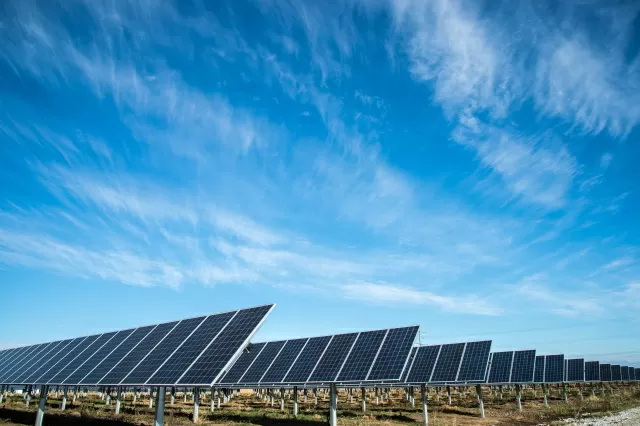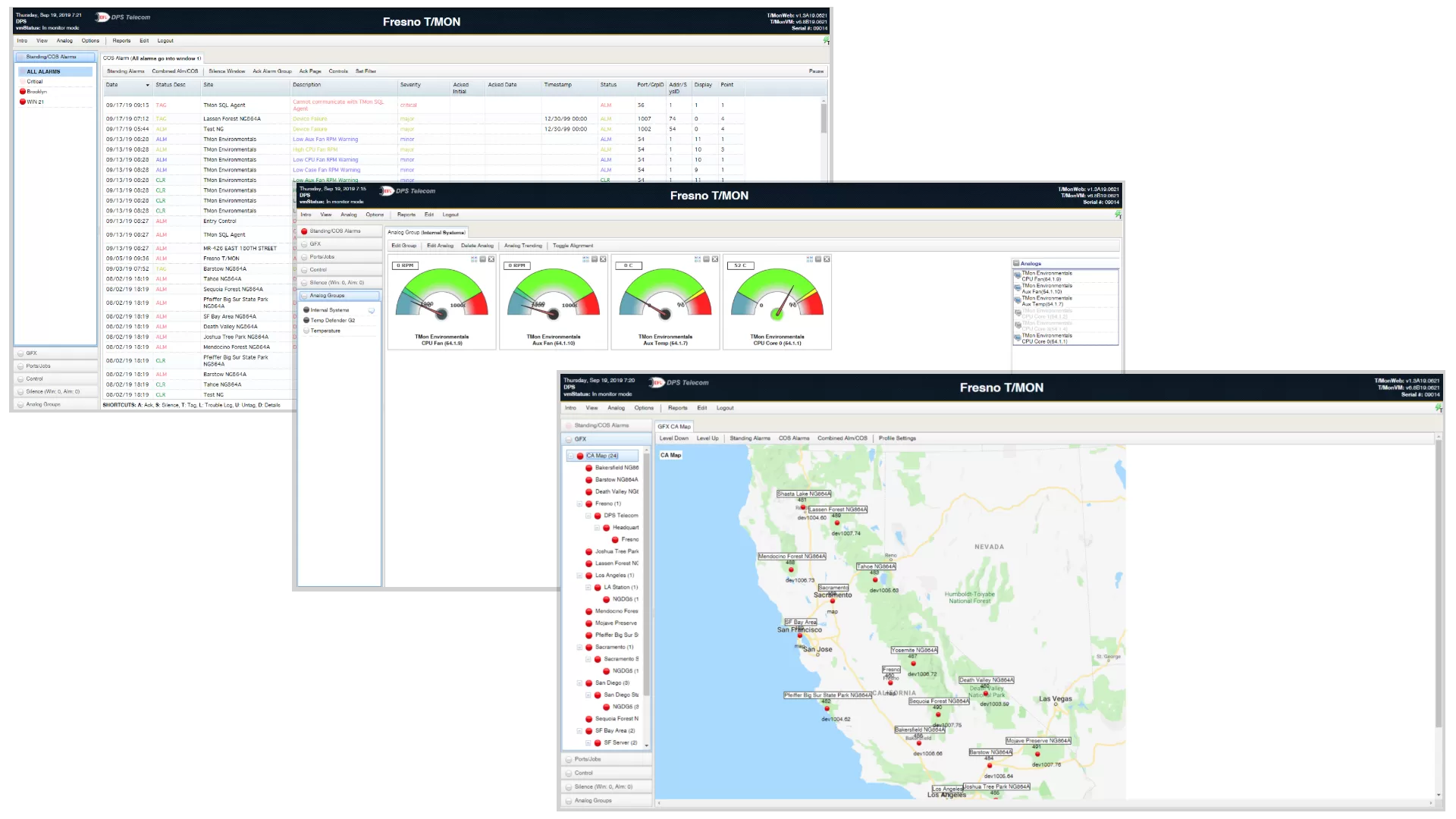Check out our White Paper Series!
A complete library of helpful advice and survival guides for every aspect of system monitoring and control.
1-800-693-0351
Have a specific question? Ask our team of expert engineers and get a specific answer!
Sign up for the next DPS Factory Training!

Whether you're new to our equipment or you've used it for years, DPS factory training is the best way to get more from your monitoring.
Reserve Your Seat TodayIf you are planning to use a solar photovoltaic (PV) system, or already uses this system, then it's important to make sure you know how much energy is being produced.
Small utility companies tend to use a meter to record and bill the end-users for the kilowatt-hours consumed. Over the course of some months, you can compare these bills to determine the average monthly consumption. While this represents usage consumption, it's different for monitoring production with PV systems.
A meter is also used to measure the energy produced but we are not interested in the total per month. We are interested in the amount of energy produced during small time frames, such as every hour or even every 5 minutes.
For that, many experts agree that putting in place some sort of performance monitoring system is critical in order to keep an eye on the amount of energy being produced and to be sure the to react immediately when problems happen.
That's where a SCADA system comes in. It is a system that links together numerous hardware and software elements of a solar site in order to easily monitor, control and analyze performance.
In this article, we'll take a look at how SCADA systems can help optimize solar PV plants.

Supervisory Control and Data Acquisition (SCADA) systems allow you to monitor data from many different devices, such as meters, inverters, weather stations, trackers, and substation equipment. Basically speaking, SCADA systems give technicians actionable information so they are able to:
With insight about your network health, you and your team can analyze what's going on and determine when and where to send technicians to fix problems. This saves your company a great deal of time and money as truck rolls will be performed only when necessary.
Especially if your company has multiple plant sites, it's very important to have a way to automatically remote monitor and control all these locations at the same time. Some SCADA systems will be able to automatically take action when a performance issue is detected, such as automatically turning on a generator.
Another point that makes SCADA important is that these systems are able to provide trend analysis reports. With this, you can investigate and determine the root causes of recurring issues.
When we talk about the SCADA system architecture, we're referring to all the elements (hardware and software) that these systems usually have in order to efficiently work and give you visibility over your remote sites.
The solar plant SCADA system architecture will include the following elements:
SCADA systems will keep an eye on the equipment at your sites at all times and keep a record of it for later analysis. HMI screens will show this real-time data and you can use it to assess alarm conditions. Having a system that can gather information in real-time allows for performance problems at plants to be more addressed in a timely manner.
Also, most systems will provide you with a summary of all the gathered data, as well as queries and reports. This is extremely helpful to detect trends and identify underlying issues, and to optimize network maintenance and management.
Usually, SCADA systems already collect plant operational information, so it makes sense to find a system that will let you get the most out of this - with advanced analytics and performance management functionality.
The monitoring and control of solar PV plants have become very important to help decrease the costs of operation and maintenance as well as to help control performance degradation during the lifespan of plant equipment. This all means that the use of a competent monitoring system is essential to ensure high performance, low downtime, and fault detection of a solar PV power plant.
Usually, in order to know how a plant site should perform, an analysis is done before and after its construction. With this information, you can calculate the actual and projected plant performance for detailed financial management reporting.
SCADA data will allow you to collect the plant's actual performance information and then compare it against the expected performance. The trend analysis provided by SCADA systems is important to let you analyze your site's performance in relation to what's desired. This will give you an insight into what you need to do in order to optimize your solar plants.
Beyond the trend analysis tool, there are other functions that an effective SCADA system will give you. These functions are:
With complete, real-time information, plant technicians and operators won't need to constantly and manually look for issues at a plant site. An efficient solar SCADA system will be able to provide notifications alerts to let operators know when a site or individual equipment in that site is not performing as expected.
If you have multiple sites to manage, it's important to have an advanced master station that will be able to handle the great load of alarms. It should filter what's important and what's not, and send notifications to you in a timely manner, while also send automatic control commands to RTUs.
A good example of a competent master station is the T/Mon LNX. It gives you these and many more features for complete visibility over your remote sites. Some of these features include:

A SCADA system for solar PV power plants needs to be more than just that. It should not only monitor critical plant functions in real-time and control equipment, but it should also be part of your general SCADA system.
This means that if you have remote monitoring systems for other aspects of your network, such as building access control, you should be able to manage it all under one unified screen. This is possible by investing in multiprotocol monitoring devices.
A multiprotocol master station, like the T/Mon, is able to present the information of all elements of your solar plants under one network management platform.
T/Mon, however, is able to take you a step further. It can be customized in order to accommodate all your integration requirements. It will be able to support even the oldest piece of equipment you have. With T/Mon's protocol conversion capabilities you'll be able to have complete visibility over anything you wish.
A SCADA system that provides you with the trend analysis feature will give you valuable insight into your network's performance. Presenting this data visually through graphs and reports on intuitive interfaces helps outline information and makes it easier for you to spot possible pain points. For example, the efficiency of all your equipment can be reviewed and compared, with the information sorted by type and equipment.
Being able to organize both historical and real-time information in a variety of ways, such as by type, model, and efficiency will make it possible for you to immediately adapt to recognizable trends. Investing in a SCADA master station that can give you advanced analytics features will optimize your solar plants' management, enabling the possibility of proactive maintenance and increasing revenue.
In a nutshell, SCADA systems can optimize solar PV plant applications. But, in order for that to happen, it's important to take into consideration multiple aspects of your potential SCADA solution. These include a dynamic configuration, a user-friendly graphical interface, historical and real-time trend analysis, as well as advanced alarm management settings.
However, it's critical to keep in mind that not all SCADA systems will be able to keep your solar plants running well. A SCADA system is only as good as its manufacturer. A manufacturer that makes a system that provides alarms as they appear on the site without any context is not giving you any value.
It's up to you to find a good vendor who will listen to your needs and deliver a good solution.
As a vertically integrated SCADA solutions manufacturer, we make sure to provide a system that is sure to bring you lasting benefits. Our specialty is to listen to your pain points, designing and engineering your solution, and then manufacturing it in-house.
Today's solar PV plants are all about flexibility and scalability, and that's what we aim for. Call us today to learn more.

Morgana Siggins
Morgana Siggins is a marketing writer, content creator, and documentation specialist at DPS Telecom. She has created over 200 blog articles and videos sharing her years of experience in the remote monitoring industry.